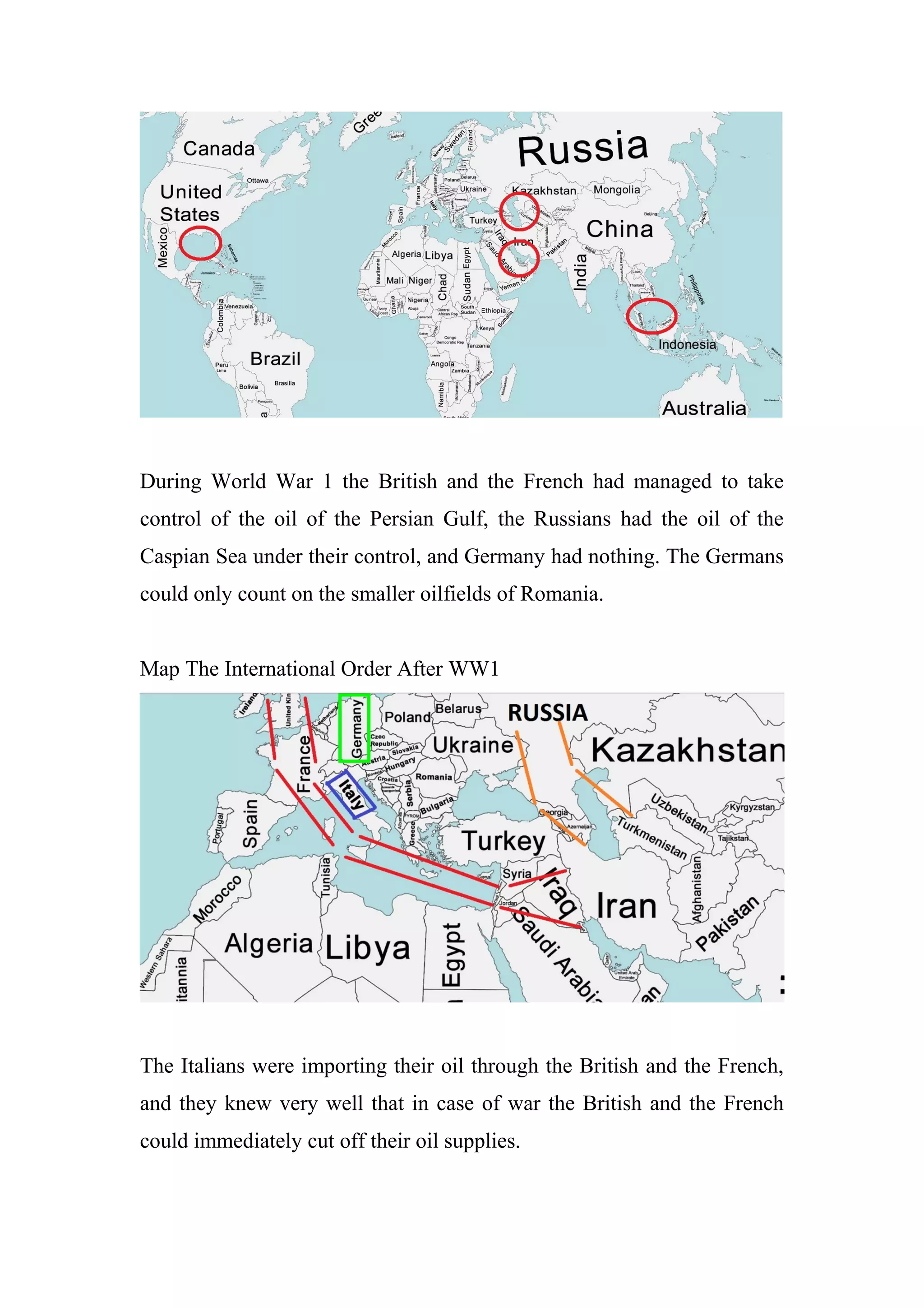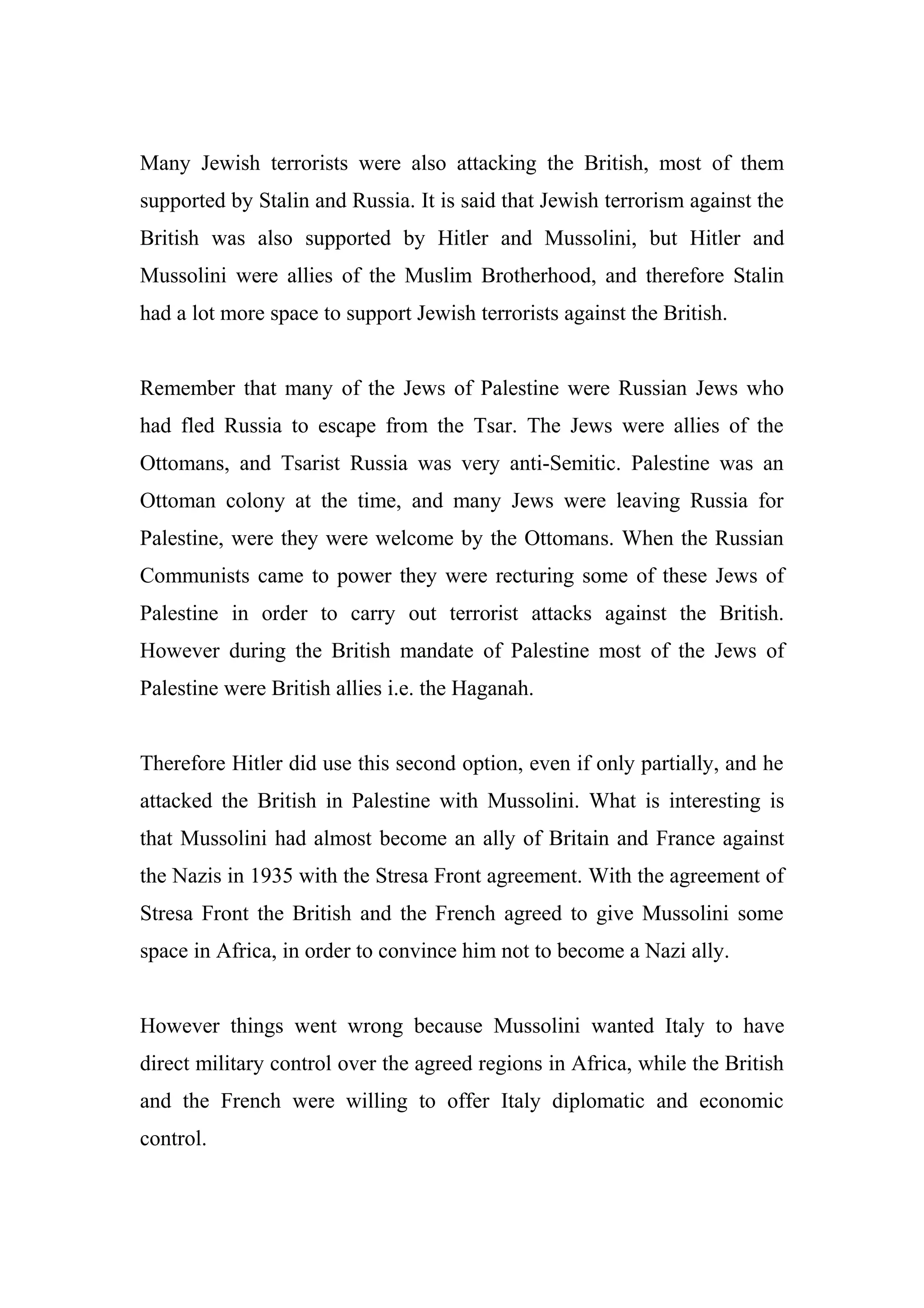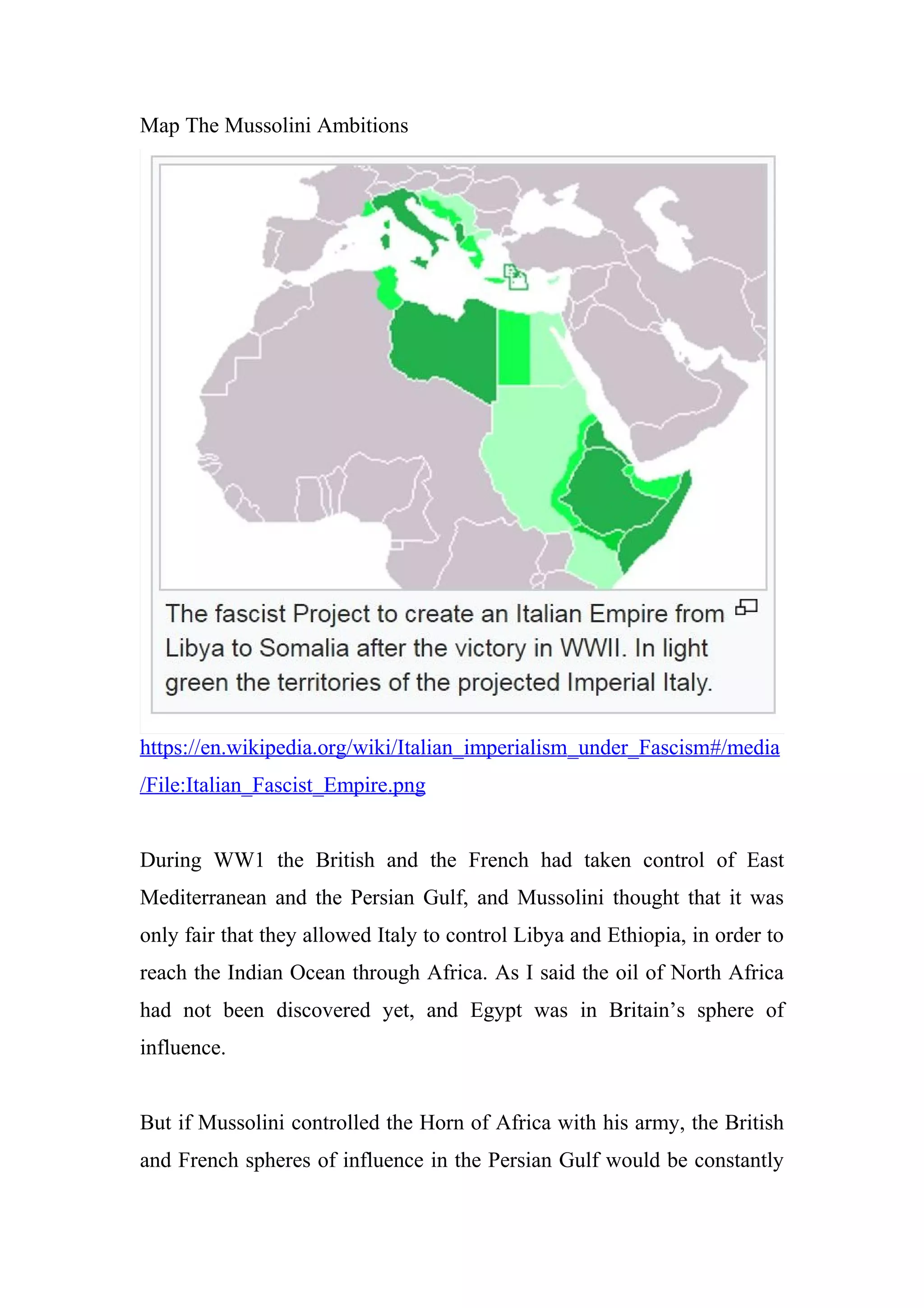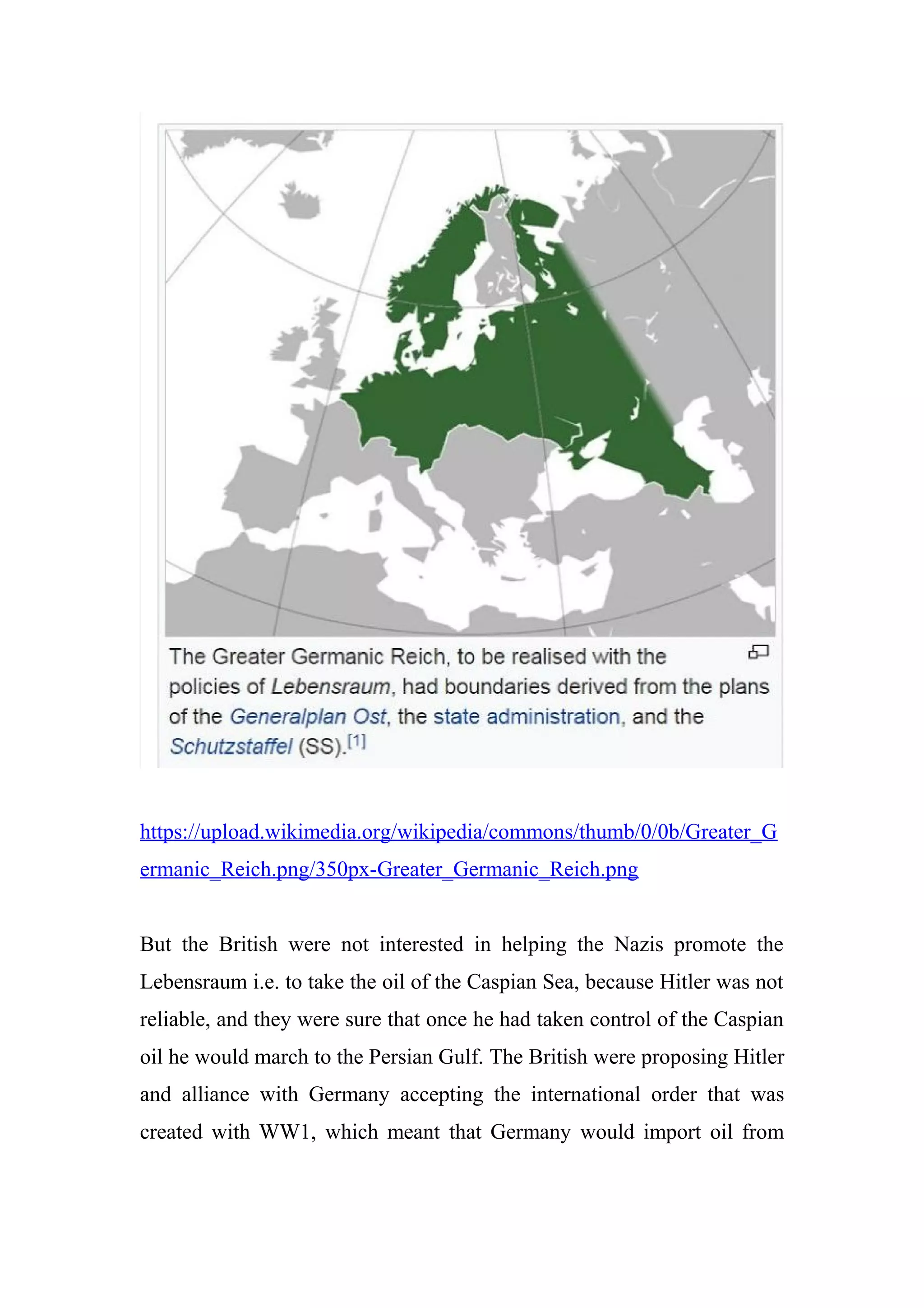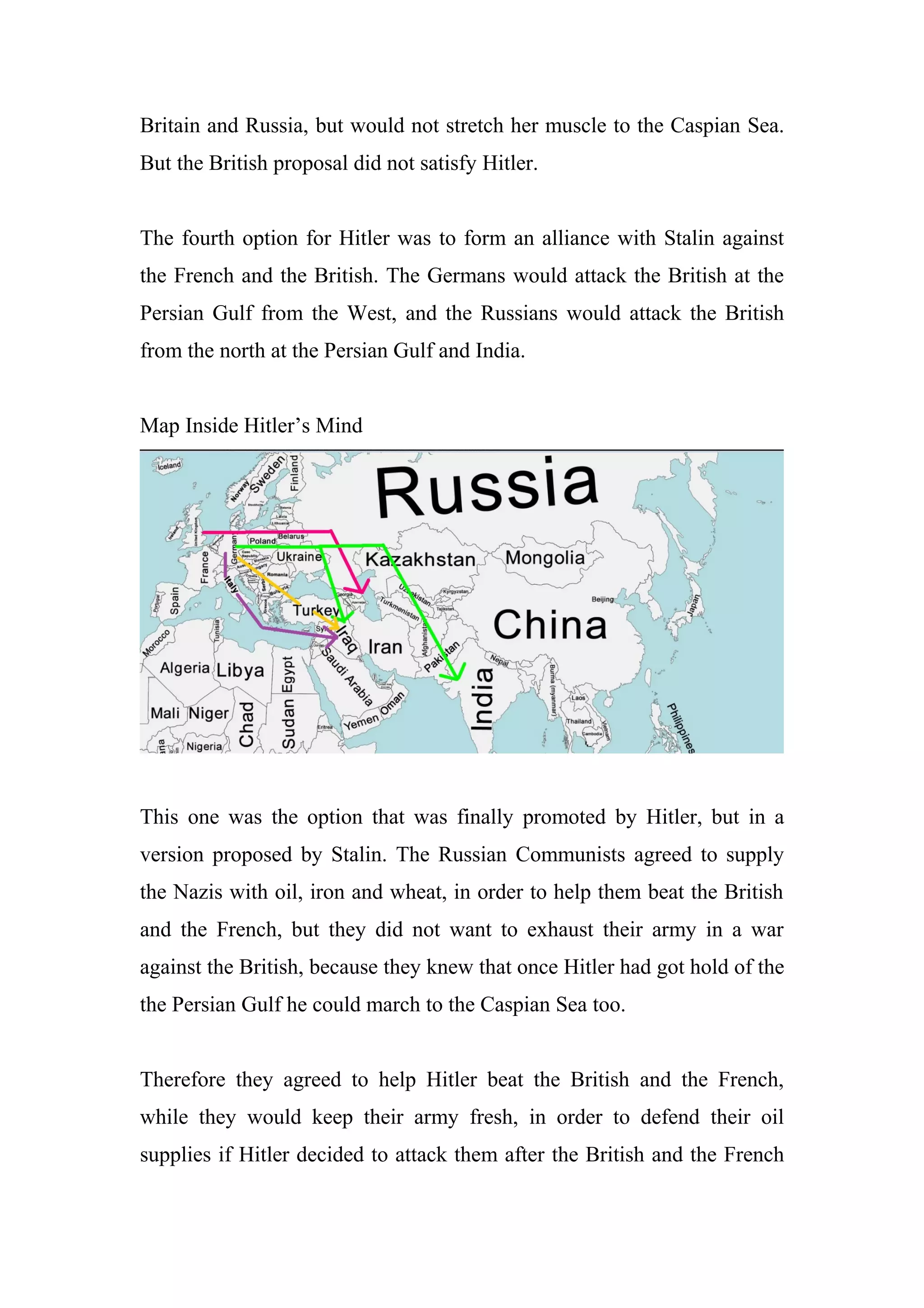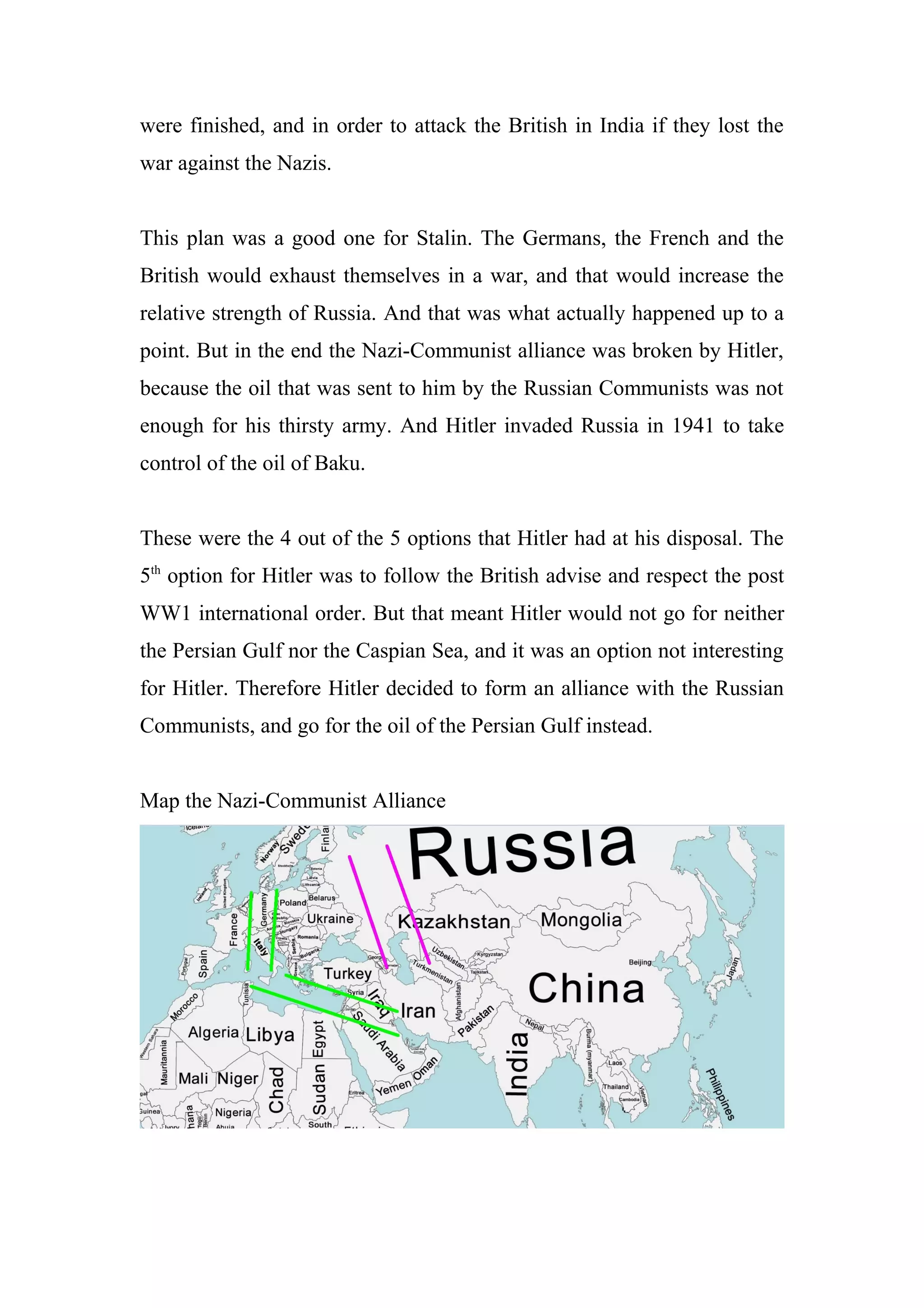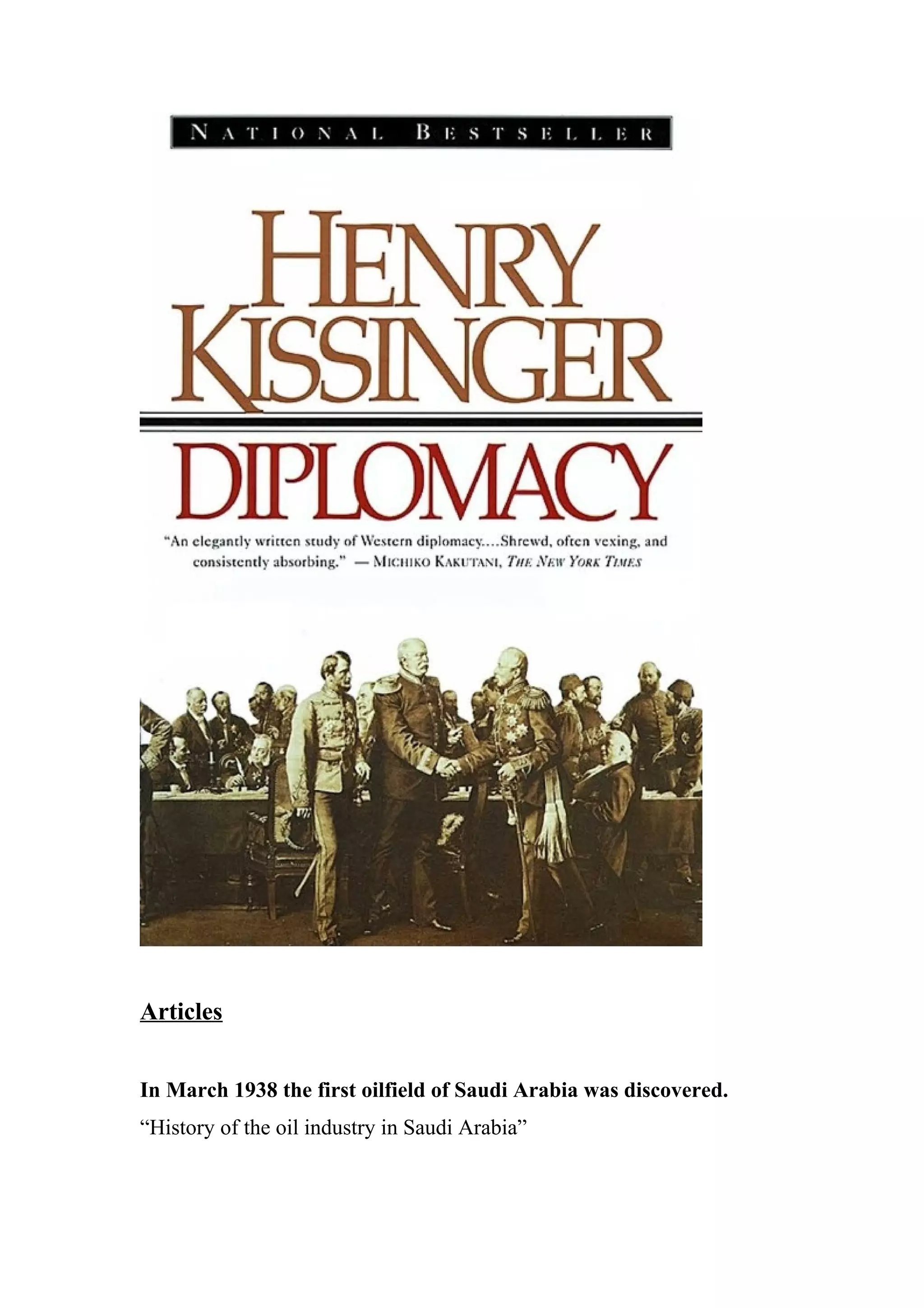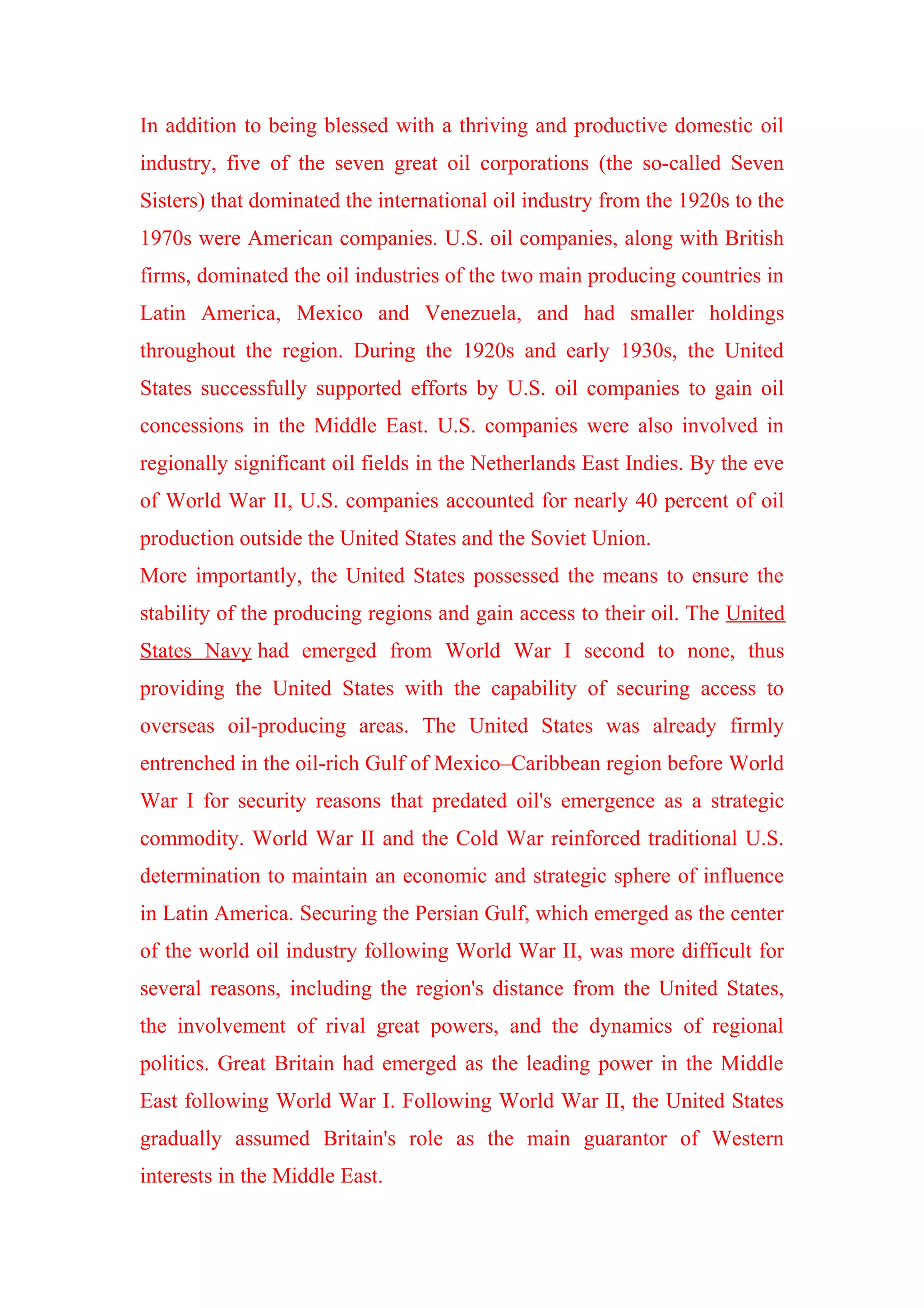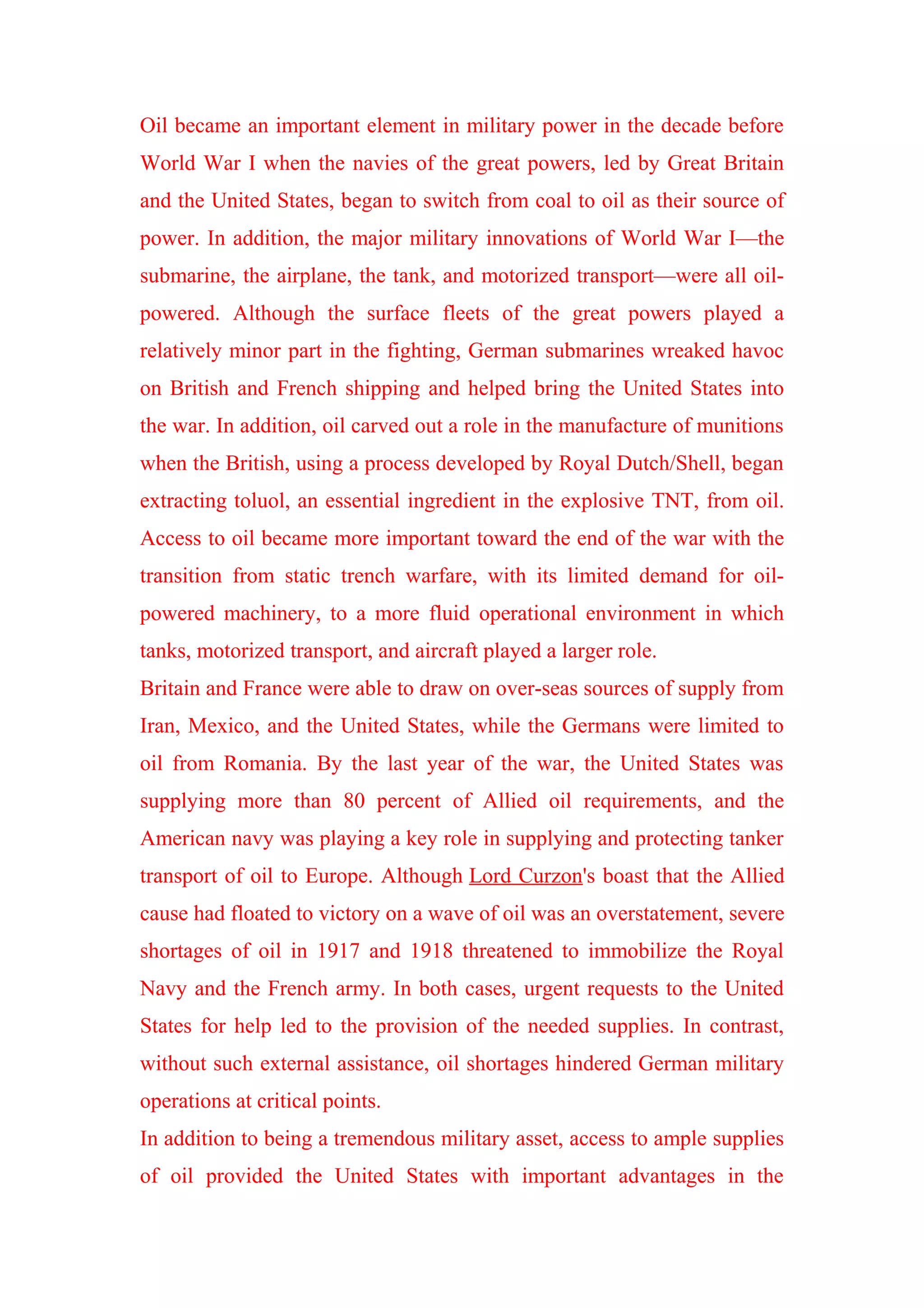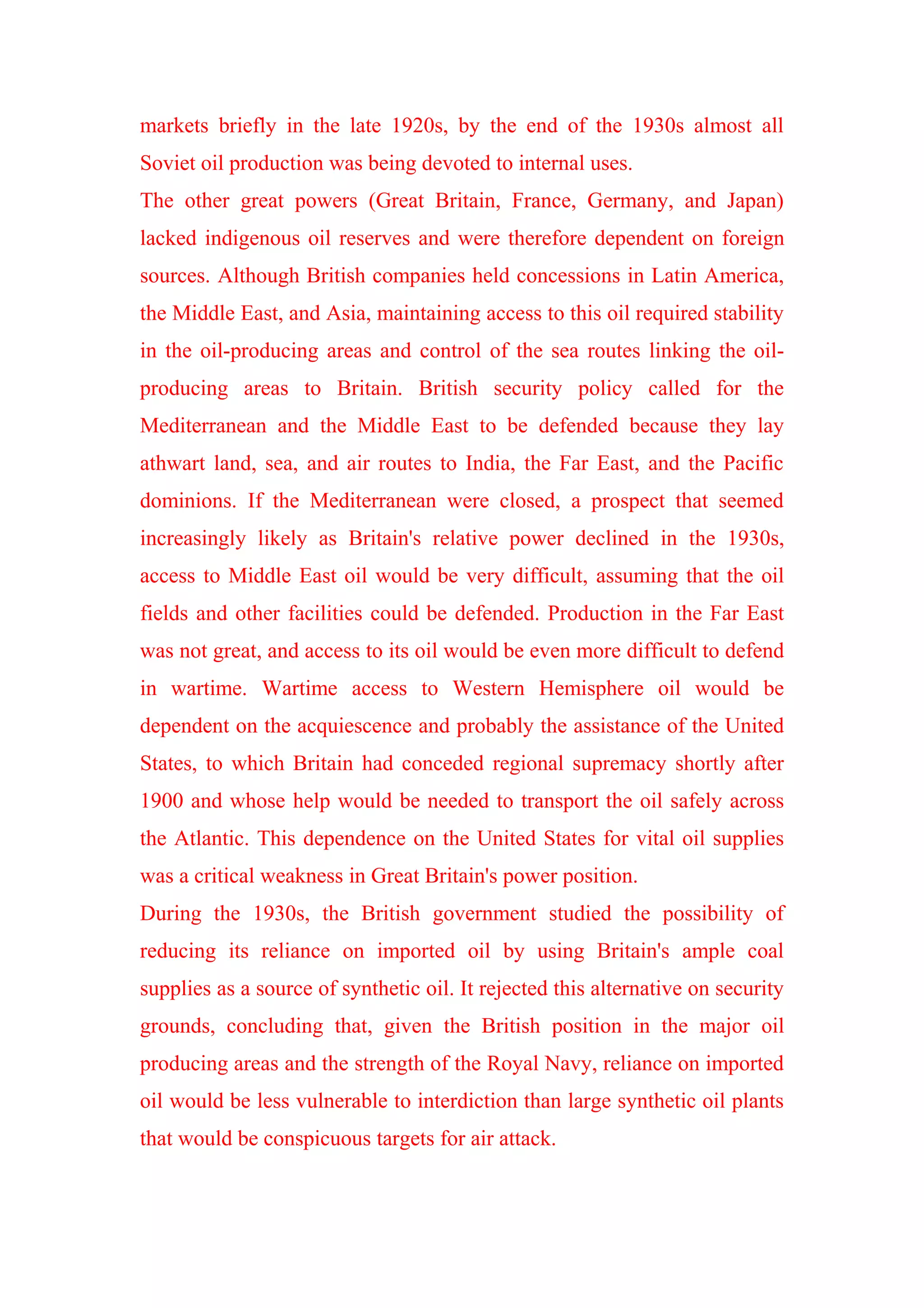Hitler had few options to secure oil supplies for Germany and destroy the international order established after WWI. His main options were to march through Austria and Turkey to the Persian Gulf, form an alliance with Mussolini to jointly attack the British in Palestine, form an alliance with Britain against France and Russia to gain European territory and Caspian oil, or form an alliance with Stalin against Britain and France so they could attack the British from both sides. Ultimately, Hitler chose the last option, allying with Stalin in the Nazi-Soviet pact to divide Eastern Europe between them, but this alliance broke down when Hitler invaded Russia to seize its oil fields.

